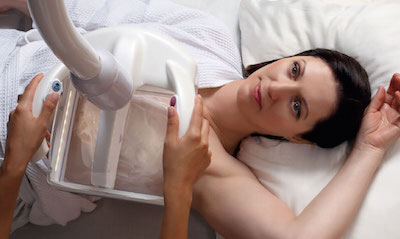
Earlier this year, we shared the outcome of a UVA study that highlighted the importance of talking to your female patients about breast density. As you’re aware, women with dense breast tissue (about 50 percent of all women) are 4 to 6 times more likely to receive a breast cancer diagnosis. In addition, studies have shown that traditional mammograms are less effective at identifying breast cancer in these patients.
In response, UVA Health System is giving women with dense breasts even more options for breast cancer screening. We spoke to UVA radiologist Carrie Rochman, MD, about the latest in screening technology.
What type of screening is recommended for women with dense breasts?
Women with dense or homogeneous dense breast tissue should consider an alternate form of breast cancer screening beyond traditional mammography. Digital breast tomosynthesis is preferable to a traditional mammogram because it produces a 3D image of the breast tissue. However, there are cancers tomosynthesis can’t detect.
This is why UVA has just begun offering supplemental screening utilizing automated 3D ultrasound technology. Traditionally, breast ultrasound is done by a radiologist using a handheld probe, which captures images of specified areas of the breast. But this new automated technology covers the entire breast, so radiologists can get a clear representation of the full area of both breasts. These images are then saved in a patient’s file for future comparisons, which makes it easier to identify changes in breast tissue.
Does 3D ultrasound screening take longer to perform than a mammogram?
An automated 3D ultrasound screening will take longer than a traditional mammogram, but not as long as an ultrasound performed with a handheld probe. A 3D ultrasound screening takes approximately 15 minutes per breast.
How soon will patients receive results from a 3D ultrasound?
As with all radiology screenings, results from a 3D ultrasound should be available within 24 to 48 hours.
Who is eligible for supplemental 3D ultrasound screening?
Women at average risk for breast cancer who have dense breasts or homogeneous dense breasts are eligible for supplemental automated 3D ultrasound screening. We want to identify which patients will benefit most; it’s our goal to continue to move toward a patient-centric approach to screening overall.
Will a woman’s breast density be noted in her medical record?
Breast density is determined during a traditional mammogram screening. At UVA, these findings are recorded in a patient’s electronic medical record, along with recommendations for a complete risk assessment if necessary.
What are the risks of automated 3D ultrasound screening?
As you’re aware, the more tests you perform, the higher the likelihood of false positive results. Talk to your patients and help them weigh the risks and benefits of this supplemental screening and screening in general.
Will insurance cover automated 3D ultrasound screening?
Insurance coverage varies by provider.
Automated 3D breast ultrasound is now being offered by referral at UVA Mammography Center Northridge, which is easy to access and has free, on-site parking.
To refer a patient to the UVA Breast Care Center, call 800.552.3723.
Image courtesy of GE Healthcare